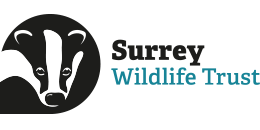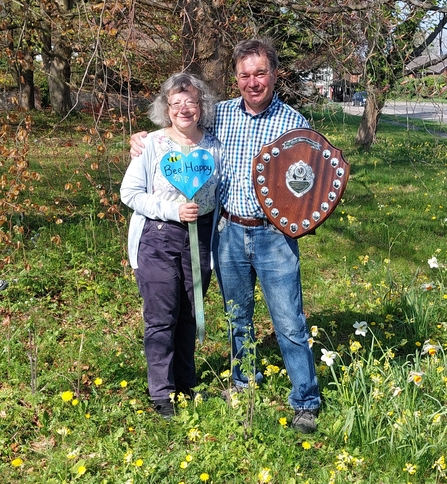Diane and Steve Poole were inspired to launch Bookham Blue Hearts Wildflower Verges during the first Covid-19 lockdown in spring 2020.
“As wildflower enthusiasts, we were delighted to see so many pop up in Spring on our local road verges which had not been mown – and extremely disappointed when they got chopped down shortly afterwards” says Diane. “So we contacted our local councillor and together managed to get key verges protected. Without regular mowing, they’re oases of wildflowers and pollinators. It’s wonderful to see orchids, cowslips, primroses and other flowers flourishing here.”
Picking up on the Plantlife Road Verge Campaign, Diane and Steve came to an agreement with Surrey Highways that 15 non-residential verges in Bookham would be mowed just once a year, at the end of the season. “It means wildflowers in the soil can thrive,” says Diane, “and provide a vital refuge and food source for pollinators.” A good verge will supply nectar and pollen from the first celandines in February to the last Devil’s-bit Scabious in September. A single species, Birds-foot Trefoil, is a food plant for more than 130 invertebrate species.
Diane and Steve started promoting the project in local print and social media, asking people to join in. “At the end of our first full year, we had more than 60 residential verges, each displaying a blue heart made by me and a friend Nick Haynes,” Steve explains.
Since then, around 30 more residential verges have been added, and Steve can barely keep up with the demand for hearts. He and Diane are also encouraging other areas to run their own schemes, such as Ashtead, Claygate, Effingham, Epsom and Ewell, Fetcham and Horsley.
“We still work closely with Surrey Highways to make sure they frame the verges (mowing a narrow strip around the edge), to show they are being managed, not neglected, which reassures residents. We also do talks around Surrey to explain the scheme – and show how wonderful it is to have these corridors of biodiversity.”




